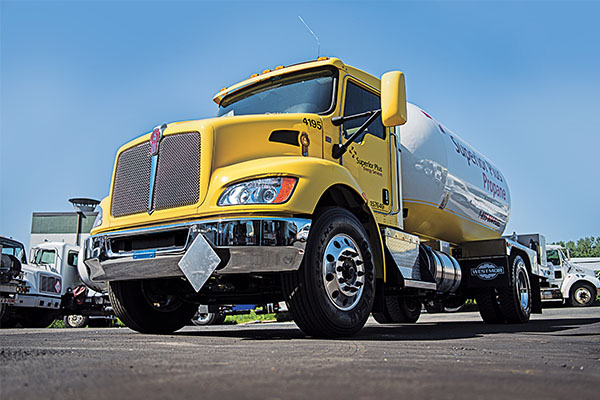Fleet safety system puts drivers first
When Superior Plus Propane chose to implement new fleet safety technology, it immediately consulted the experts: namely, the drivers the technology is designed to protect.

So far, Superior has installed the two-camera safety system in 459 bobtails across all regions of its operational footprint. Photo by Nick Bellucco, Superior Plus
The company tested the technology at a pilot location to gain direct feedback from drivers and managers. Using that feedback, the company selected the Samsara system, which now protects drivers in 459 bobtails companywide.
The two-camera system records video footage in-cab and on-road, and reports safety concerns based on designated “triggers,” such as harsh braking. This system enables Superior to identify and correct risky driving behaviors, recognize good driving and maintain vehicles more effectively.
“The system is part of Superior’s investment in people, trucks and technology, and as we move forward, the system is designed to protect the driver and safeguard the company’s fleet investment,” says James Devens, vice president of operations.
Drivers and managers can review video footage when the system detects potentially unsafe driving behaviors and use the footage as a coaching tool if warranted.
Bruce Ruppert, director of fleet, compares the process to athletic training – even world-class athletes who are at the top of their game continuously watch film to improve themselves.
The video footage also allows managers to reward drivers for behaving appropriately in dangerous situations. For example, footage from a harsh braking incident may reveal that the driver was cut off by another vehicle but still practiced good defensive driving.
After nearly six months of operation, Superior has already seen this benefit, and many others, come into play. For instance, video has exonerated drivers accused of damaging property, says Devens. In addition, fleet operators can track vehicle functionality – such as battery life and fuel levels – to better manage maintenance schedules and reduce downtime, adds Ruppert.
A slow start and clear communication strategy have been central to the program’s successful launch, says Devens. So far, Superior has introduced just a few triggers, including speeding and harsh braking, so drivers can get used to the technology. It has also formed a driver committee so that drivers can provide ongoing feedback and weigh in on changes to the system.
“When we make changes, all of the drivers are going to go out there and know their fellow drivers were involved in this process, and they’ve helped us come to these conclusions,” says Ryan Quiggle, director of health and safety. “It’s not just coming from a few guys in a room. It’s a true company involvement right down to their peers.”
Going forward, Superior plans to roll out new incident triggers and increase trigger sensitivity. It also aims to create a rewards system that helps drivers track their progress over time and enhances engagement with the safety program.
















